Mise en place
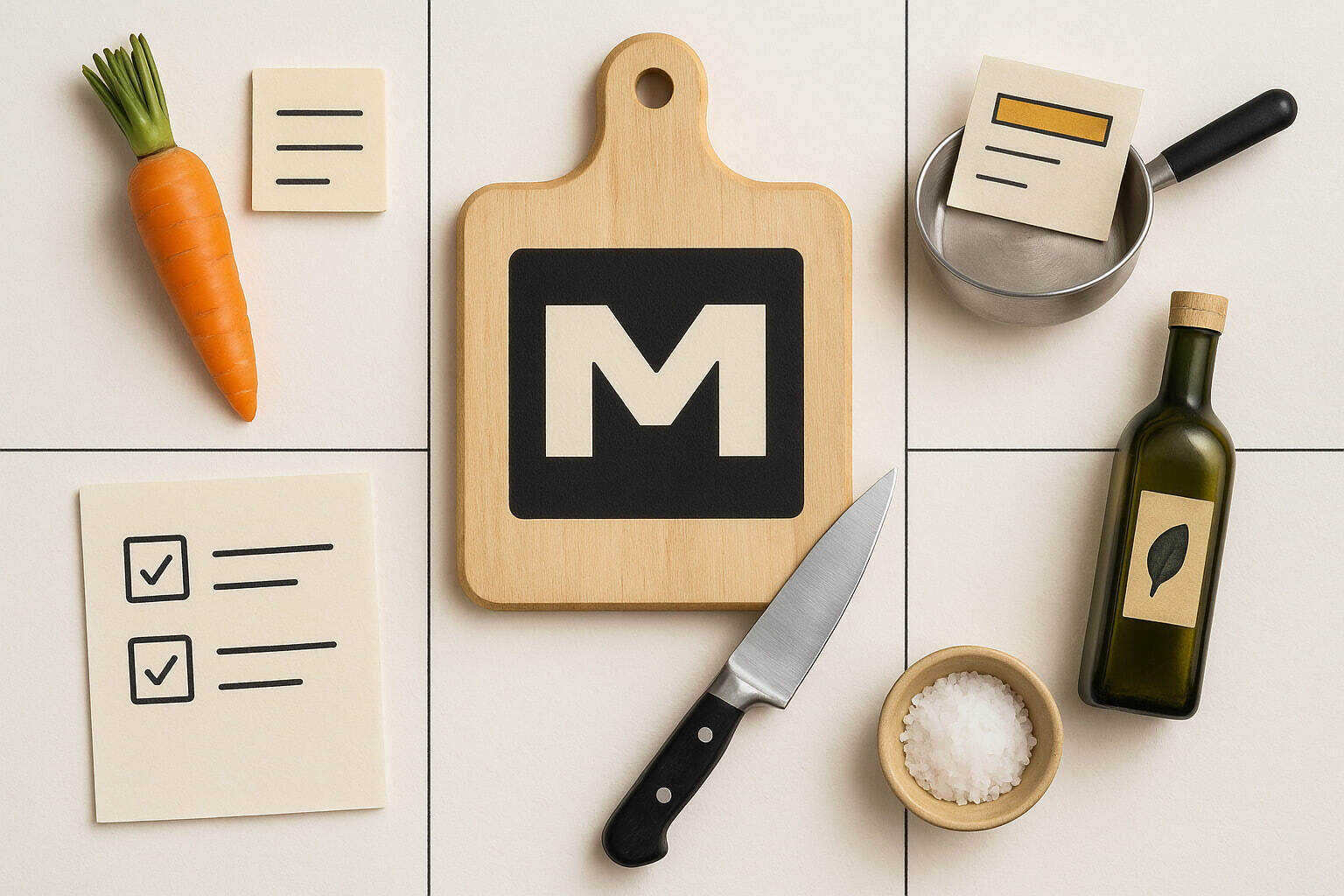
We’ve been using the same project management tools as everyone else for years, and honestly? They’re kind of annoying. You know the drill: paying per seat as your team grows, wrestling with features that almost do what you need, and constantly adapting your workflow to fit someone else’s idea of how teams should work.
So we built our own. When Claude Sonnet 4 came out, I experimented with Convex Chef and quickly put together a prototype. After a few weeks of iterations and real-world testing, we launched Mise (pronounced “meez”), our internal project management platform. The team loves it.
Mise en place is a French culinary phrase that means “everything in its place.” It’s that feeling when you sit down to work and everything you need is exactly where you expect it to be. Instead of digging through Slack threads to find that one important message or trying to remember what was supposed to deliver this week, everything should just be there.

Why we built it
There are plenty of project management tools out there. We’ve tried most of them. But here’s the thing: we kept molding our team to fit the software instead of the other way around. And as a studio that prides itself on custom solutions, that felt pretty hypocritical.
Building Mise gave us exactly what we needed: no per-seat fees that make you think twice about adding clients, features that actually match how we work, and the ability to change things instantly when our process evolves. Plus, it’s a nice showcase of what we can build when we’re not constrained by someone else’s vision.
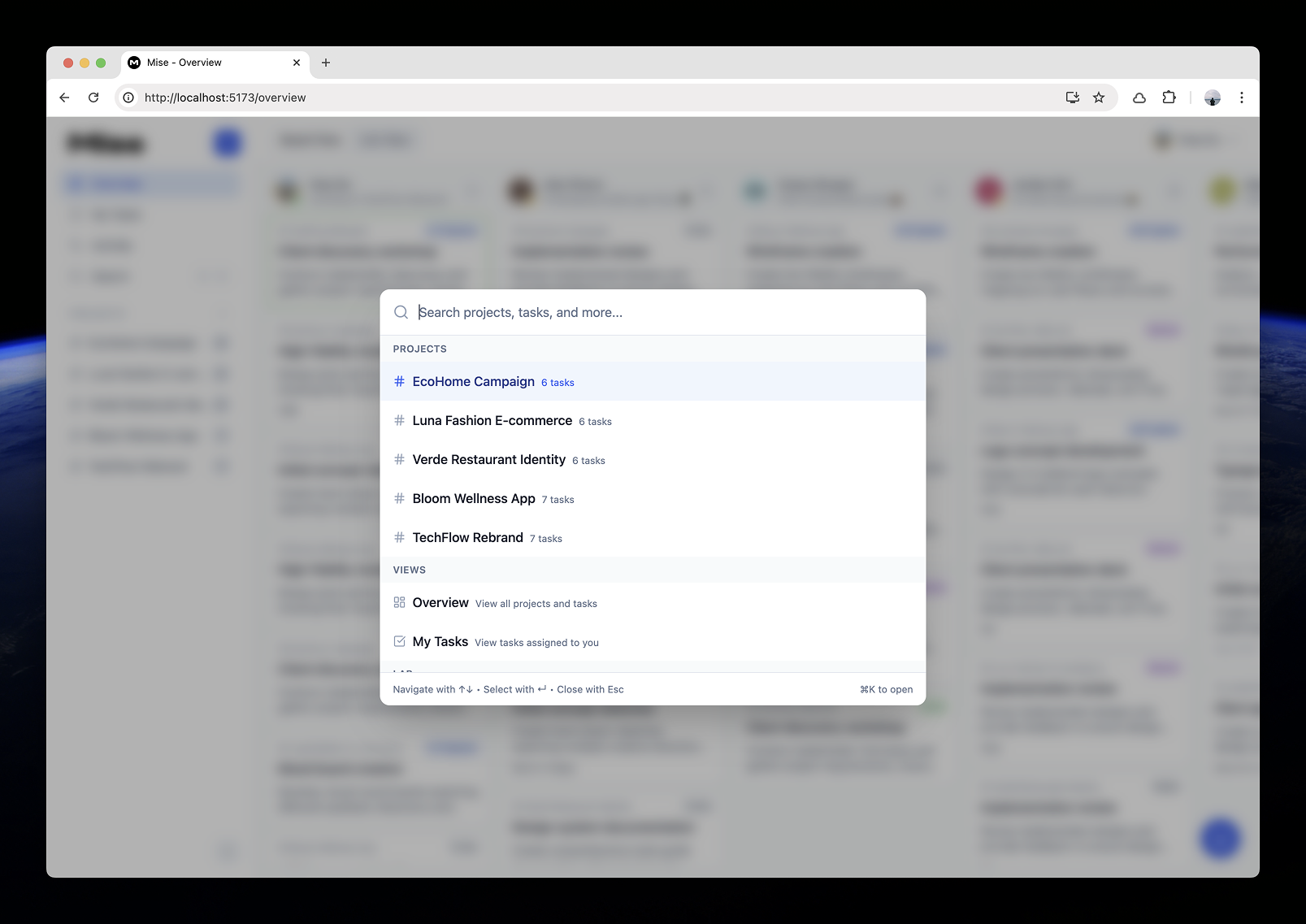
Slack integration
We practically live in Slack, so any project tool that doesn’t play nice with it is basically useless. Mise watches our channel names and suggests the right project when you’re creating tasks. See an important message? One click and it becomes a tracked task, with a link back to the original thread.
The best part is how it handles context. If we’re discussing a client issue in #client-project-name, Mise already knows which project that task should belong to. No more “wait, which project was this for again?”
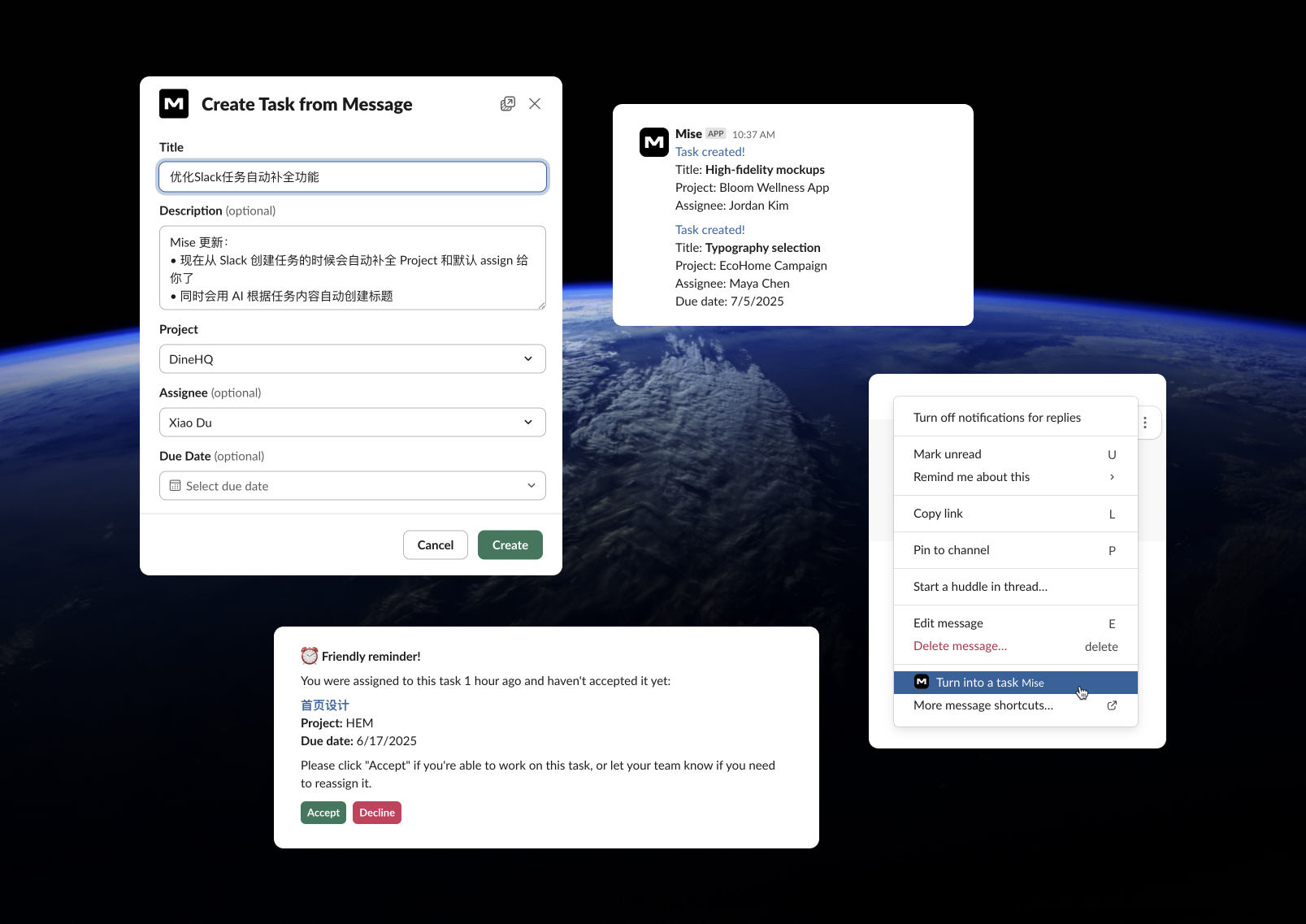
Meet Sous, our AI assistant
This is where things get interesting. Sous (pronounced “soo” and keeping with the kitchen theme) isn’t just another chatbot we slapped onto our app. It actually knows what’s going on.
Ask Sous “What’s Xiao working on?” and it’ll tell you. Ask it to “create a task for fixing that logo bug and assign it to whoever’s free,” and it’ll do it. The difference between Sous and those generic AI assistants is context. It knows which project you’re looking at, what’s on your plate this week, and who’s available. Instead of just giving you advice, it can actually help you get things done.
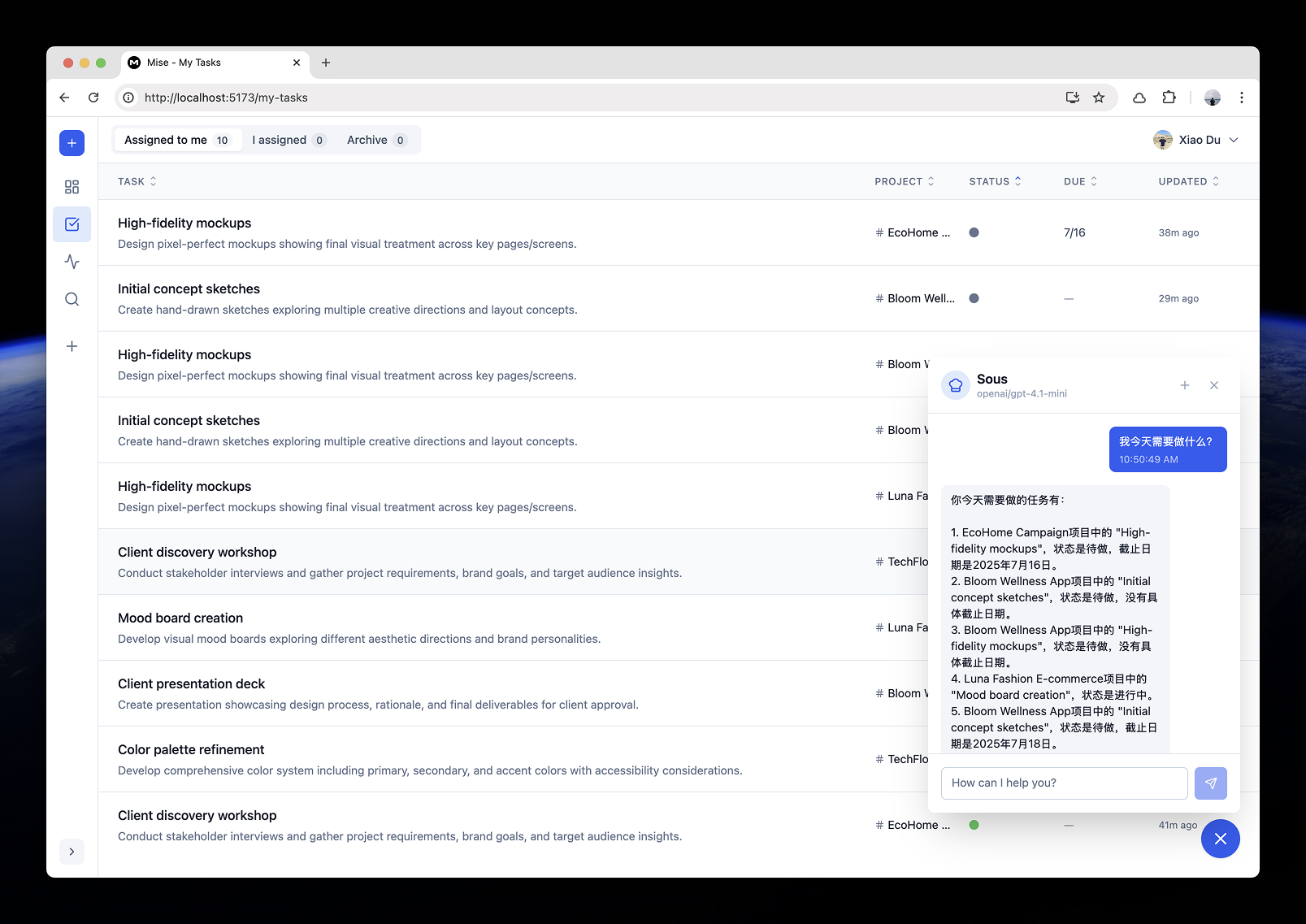
How we built it
We obsessed over making Mise feel instant. The interface appears immediately, even on slower connections. Real-time updates show who’s working on what without refreshing anything. And when we need to bring clients into specific projects, they get access to exactly what they need and nothing more.
Convex’s real-time database makes this magic possible. When someone updates a task, assigns a new project, or changes their status, everyone sees it immediately. The real-time sync is so seamless that you forget you’re using a web app. Tasks update as you type, team member statuses change instantly, and collaboration feels natural because everyone is always looking at the same current state.
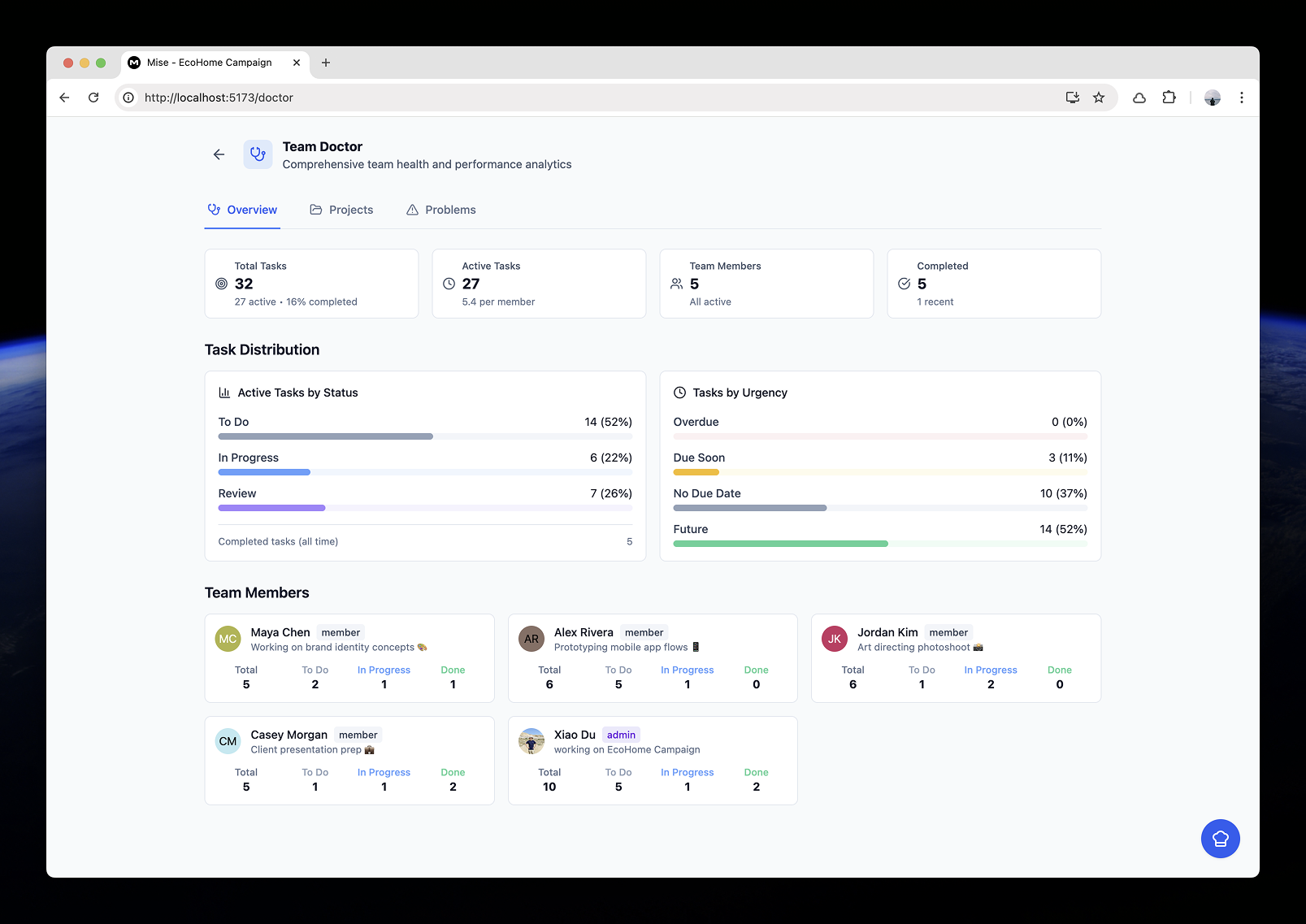
What this actually means
Building Mise taught us something important: small teams with the right tools can create software that feels like it came from a much larger company. The AI integration throughout our development process (from writing code to Sous helping users) shows what’s possible when you’re not afraid to experiment.
We didn’t set out to revolutionize project management. We just wanted something that worked the way we do. But in building it, we proved (to ourselves, mostly) that custom software doesn’t have to take forever or cost a fortune. Sometimes the best solution is the one you build yourself.